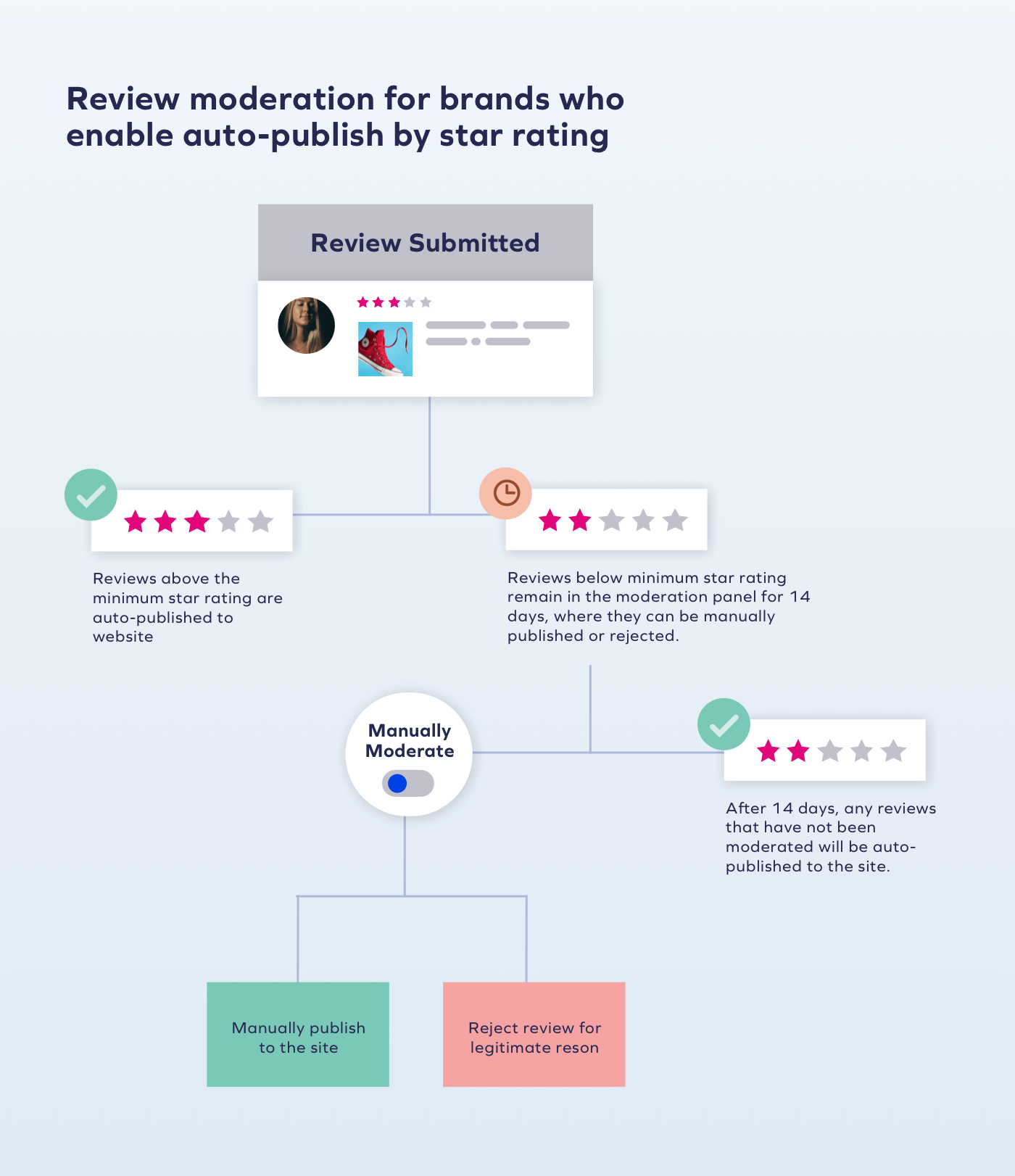This blog post has been updated.
We talk a lot about the importance of authentic reviews here at Yotpo, and how brands should publish all of their reviews, even the bad ones.
To ensure that we’re creating a compliant environment for brands and a trustworthy experience for consumers, we wanted to remain transparent by showcasing the Federal Trade Commission’s (FTC) and the EU Omnibus Directive’s regulations for collecting, moderating, and displaying reviews.
Fair review practices
The FTC has published educational resources on best practices for collecting and moderating customer reviews as it relates to marketers and review platforms.
Collecting reviews
The general guidance for marketers on collecting reviews includes:
- Refraining from asking for reviews from those who haven’t used your products or services.
- Not asking for reviews from customers you believe will only leave positive ones.
- Using caution when offering incentives for reviews as there should be no conditions attached to the incentive for the review. Disclosure is key here.
- Disclosing whether anyone from your staff, family, or social circle has written any reviews. Otherwise, the review should not be included on the site.
Moderating and displaying reviews
In order to further promote transparency while moderating reviews, the FTC encourages brands to:
- Publish all reviews — both positive and negative.
- Display reviews in a way that is fair; positive reviews should not be made more prominent than negative ones.
- Disclose any relevant information regarding the reviewer. If the reviewer has any connection to the product or service and/or if they received any kind of compensation for their review.
- Disclose how reviews are collected and processed before they’re published.
- Identify fake or misleading reviews after they’ve been published. Then, determine whether they should be removed or kept (but labeled as fake/suspicious).
Yotpo shares the belief that showing both good and bad reviews on-site is a key factor in creating an authentic shopping experience and promoting consumer confidence. Because of this, our moderation practices were updated in 2021 to ensure alignment with FTC guidelines.
We’ve worked to design a moderation process that is fair, yet maintains your brand’s control over the content as long as reviews are rejected over legitimate reasons and in a timely manner.
This ensures that the brands working with Yotpo have access to the best moderation practices, and that they are applying moderation practices aligned with the guidelines of the regulator. Remember the key to FTC compliance is to publish all reviews (with a few exceptions detailed below) as quickly as possible.
Yotpo moderation practices
Our moderation process only affects brands that use the Auto-Publishing Reviews feature. When auto-publish is enabled, reviews submitted by your customers are automatically published to the Reviews Widget on your site. Generally, you can choose to publish all reviews right away, or only publish reviews with a minimum star rating.
Now, brands that choose to raise the star rating filter above 1-star will need to take action on (either publish or reject) reviews that fall below the minimum rating. Our strong recommendation is that reviews are only rejected for a legitimate reason as outlined below, otherwise the FTC may view rejections as a law violation. And while we allow a 14-day window, the FTC may require brands to moderate and make decisions about posting in a much shorter time period.
This change means that all reviews, whether positive or negative, will be published in a timely manner — helping to promote fair and authentic review publishing practices, while continuing to give brands control of their content.
Here’s what the moderation flow looks like:

When brands can reject a review
There are a limited number of legitimate reasons where a brand can reject a review from appearing on their website. The FTC says that brands are within their rights to reject reviews that:
- Contain unlawful, harassing, abusive, obscene, vulgar, or sexually explicit content
- Are inappropriate with respect to race, gender, sexuality, or ethnicity
- Contain confidential or private information, are clearly false or misleading, or have been written by a competitor.
Additional reasons for rejecting a review may include when it makes favorable performance claims that are false or misleading, and when a brand has a good faith belief that a review is fake and/or not written by a verified customer.
Yotpo creates the most trustworthy experiences for consumers and brands alike. Sharing positive and negative reviews on-site is crucial to creating a more authentic experience for your customers.
Best practices for reviews in the EU
Fair review practices are not unique to the US; the European Union (EU) follows similar practices when it comes to collecting, moderating, and displaying reviews. The EU also has regulations in place for fake reviews. According to the Omnibus Directive, brands are also not permitted to:
- Publish only positive reviews.
- Delete negative reviews.
- Create fake reviews.
- Make false claims about verified consumer reviews.
- Ask others to submit fake reviews.
- Hide how reviews have been collected and processed.
Brands in the EU are encouraged to keep these best practices top of mind for all product reviews.
Yotpo review verification
Brands are responsible for complying with the Omnibus Directive laws and regulations. However, brands can also use Yotpo tools such as the Verified Buyer Badge and the Verified Reviewer Badge to help them keep track of legitimate reviews.
For instance, if there’s a Verified Buyer Badge next to a review, this means that the shopper left a review after receiving an Automatic Review Request following their purchase. The Verified Reviewer Badge, on the other hand, is placed next to reviews when shoppers post their reviews directly to a brand’s site. Once they post the review, the shopper will receive an email to authenticate the review. After the email address has been verified, that review will receive the Verified Reviewer Badge. Reviews posted via social media may also receive the Verified Reviewer Badge.
However, if a review cannot be verified by either an Automatic Review Request, email, or social, it may be posted as Anonymous.
Why brands should publish all relevant reviews
Keep in mind that bad reviews aren’t necessarily bad for business. Consider the stats:
- 53% of consumers specifically seek out bad reviews for one or more products they’re interested in.
- Consumers trust reviews more when they see a mix of good and bad feedback. If the feedback is entirely positive, 95% believe the reviews are fake or screened by the company.
- 68% of shoppers trust reviews more when they see both positive and negative content.
Publishing all of your reviews — including the negative ones — benefits both brands and consumers. For brands, it helps to boost authenticity and overall consumer confidence. For consumers, it means making better-informed purchases from a brand they trust.
Yotpo customers can rest assured that their review provider reflects the latest guidance from the FTC as well as the Omnibus Directive. These updates and processes for collecting, moderating, and displaying reviews helps brands leverage the full power of customer reviews, while enhancing shoppers’ trust in brands.



